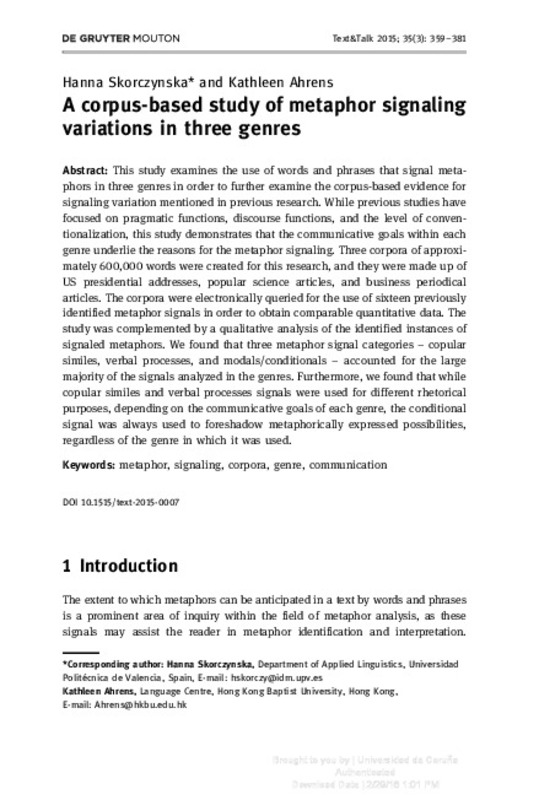JavaScript is disabled for your browser. Some features of this site may not work without it.
Buscar en RiuNet
Listar
Mi cuenta
Estadísticas
Ayuda RiuNet
Admin. UPV
A corpus-based analysis of metaphor signaling in three genres
Mostrar el registro completo del ítem
Skorczynska Sznajder, HT.; Ahrens, K. (2015). A corpus-based analysis of metaphor signaling in three genres. Text and Talk. 35(3):359-381. https://doi.org/10.1515/text-2015-0007
Por favor, use este identificador para citar o enlazar este ítem: http://hdl.handle.net/10251/62888
Ficheros en el ítem
Metadatos del ítem
| Título: | A corpus-based analysis of metaphor signaling in three genres | |
| Autor: | Ahrens, Kathleen | |
| Entidad UPV: |
|
|
| Fecha difusión: |
|
|
| Resumen: |
This study examines the use of words and phrases that signal metaphors in three genres in order to further examine the corpus-based evidence for signaling variation mentioned in previous research. While previous studies ...[+]
|
|
| Palabras clave: |
|
|
| Derechos de uso: | Reserva de todos los derechos | |
| Fuente: |
|
|
| DOI: |
|
|
| Editorial: |
|
|
| Versión del editor: | http://dx.doi.org/10.1515/text-2015-0007 | |
| Código del Proyecto: |
|
|
| Agradecimientos: |
The first author would like to thank Generalitat Valenciana (Spain) for the grant (BEST/2009/243) supporting this research. The second author would like to thank Hong Kong Baptist University for a Faculty Research Grant ...[+]
|
|
| Tipo: |
|









